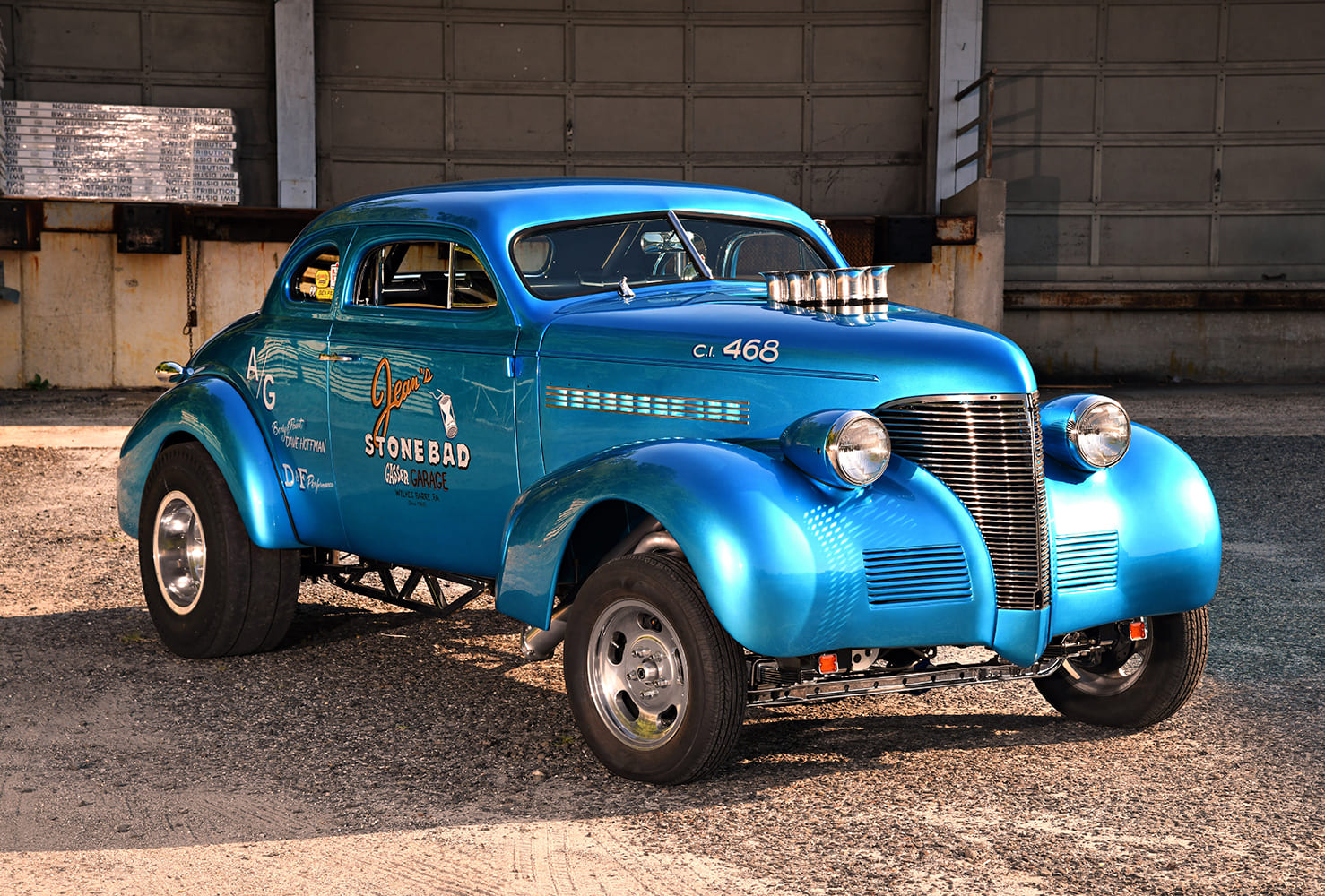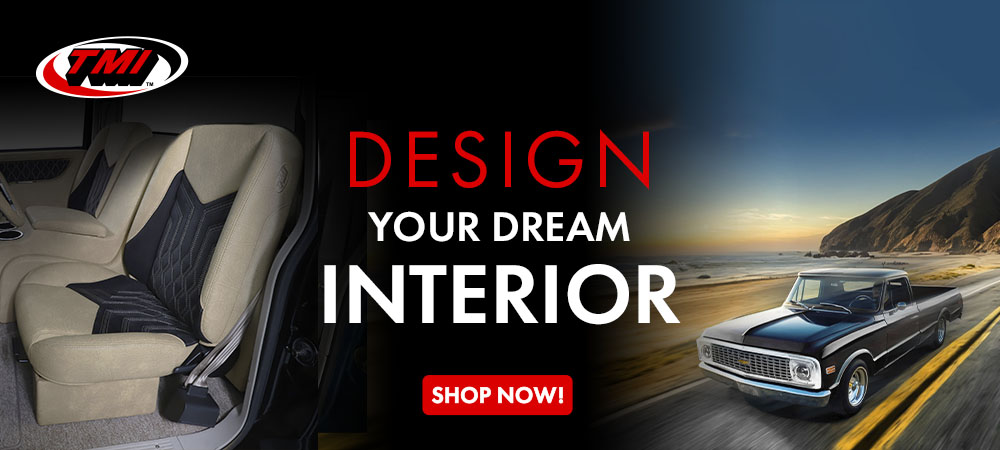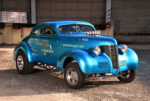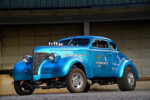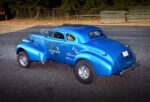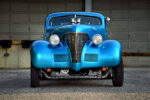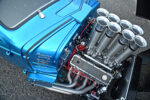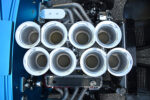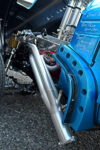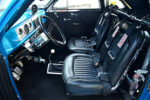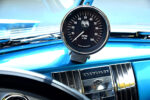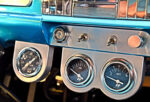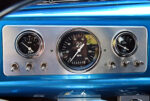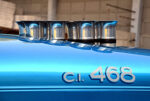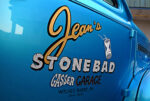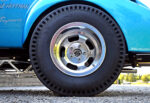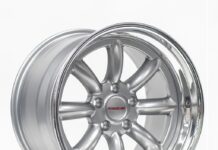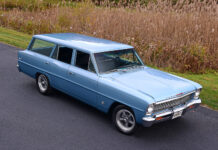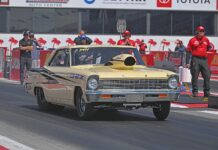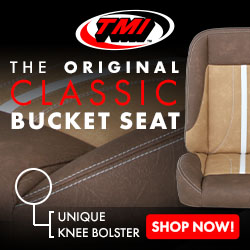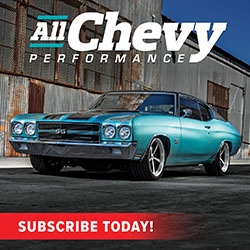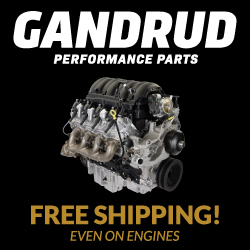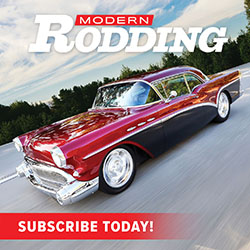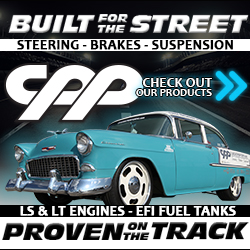By Scotty Lachenauer – Images by the Author
“Everybody has their dream car, and I did too. I was hooked on gassers! To me if a car is not out of control and ridiculously loud, it’s just boring,” Joe Mahalek owner of this big, bad, blue 1939 Chevy Master DeLuxe gasser states. “I bought the rust bucket almost 30 years ago to build myself the type of car I used to love to watch at Vargo Dragway and Atco Raceway when I was a kid.”
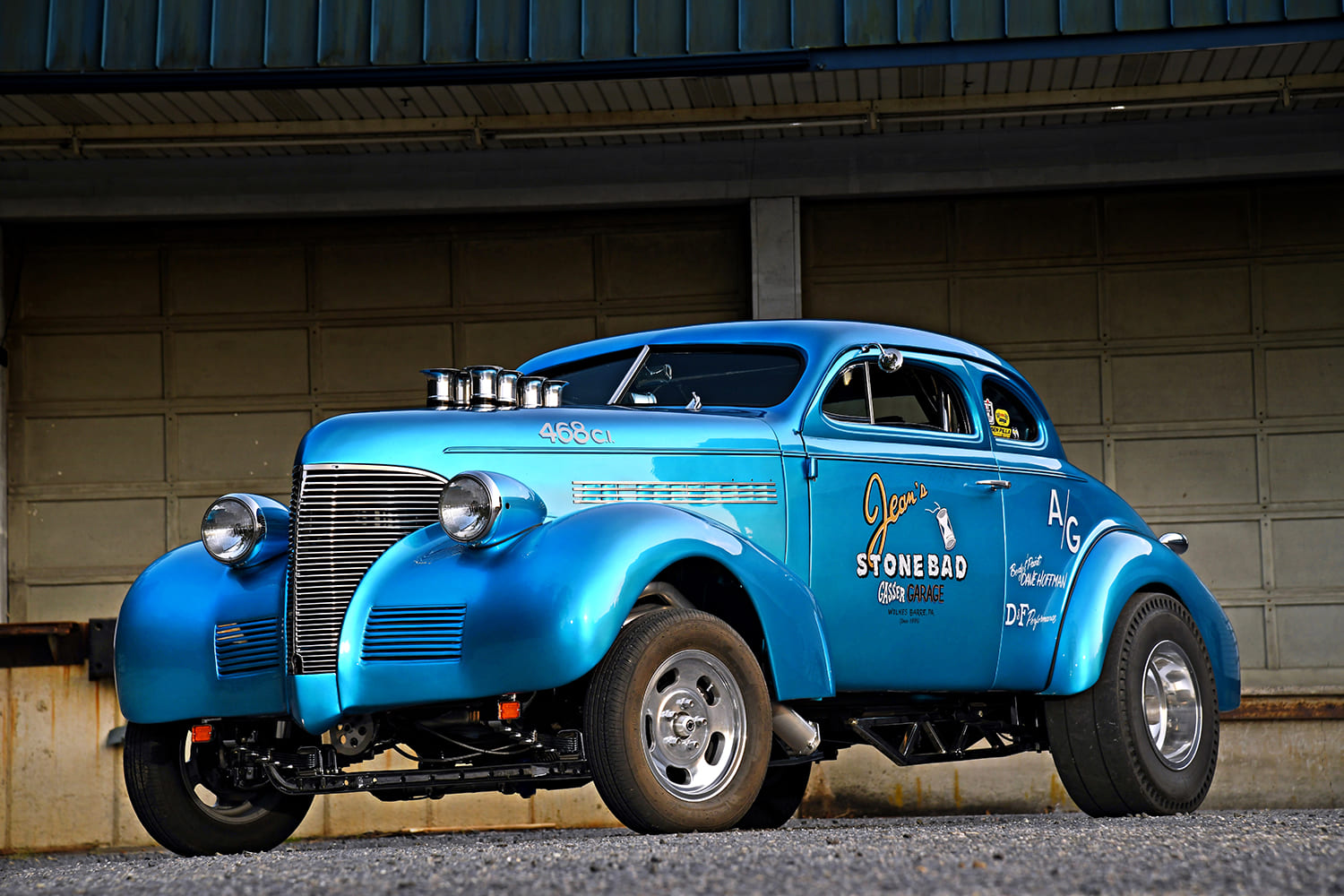
The carcass that Joe started out with was heavily corroded and nearly beyond help, but that didn’t deter the man from making it his starting point. It had no front fenders or hood, and the rear fenders were not salvageable. It also lacked a trunk lid and the floors were pretty much gone. So, with the odds stacked against him, Joe prepared for the rocky road ahead. Not having his own garage at the time, he first stored the car at his brother’s house 2½ hours away and would work on the car only on weekends.

“As a machinist, the first thing I did was set out to build a new chassis. Originally, I built the entire chassis out of wood, cutting and changing things as I went along,” Joe mentions. “After I had things where I wanted them, I took the measurements and fabricated the chassis out of rectangle tubing on my commercial welding table. Attempting to build the entire car by myself, my brother, Stanley, thought I was nuts.”
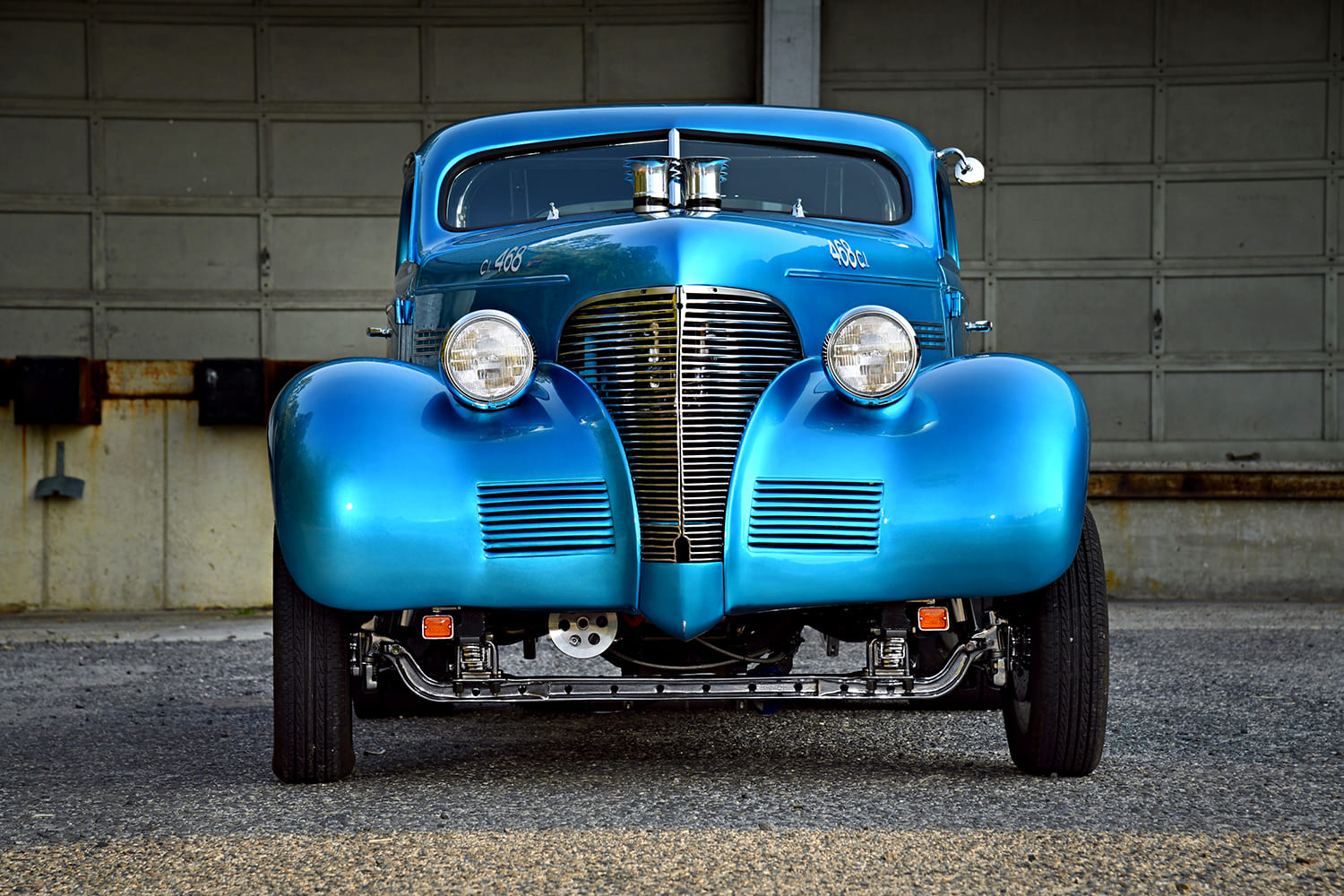
Over the years, there was always a hunt going on, with Joe and his nephew John Mahalek digging through local junkyards for those elusive parts and pieces Joe needed to complete the Chevy. With the frame built, Joe sought to get the suspension together, first sourcing the parts for the all-important gasser front end. Joe had concerns about the car’s handling ability, so he ditched the idea of a straight axle like most gassers used and instead went with a chromed dropped axle and leaf springs from a 1968 Chevy van.
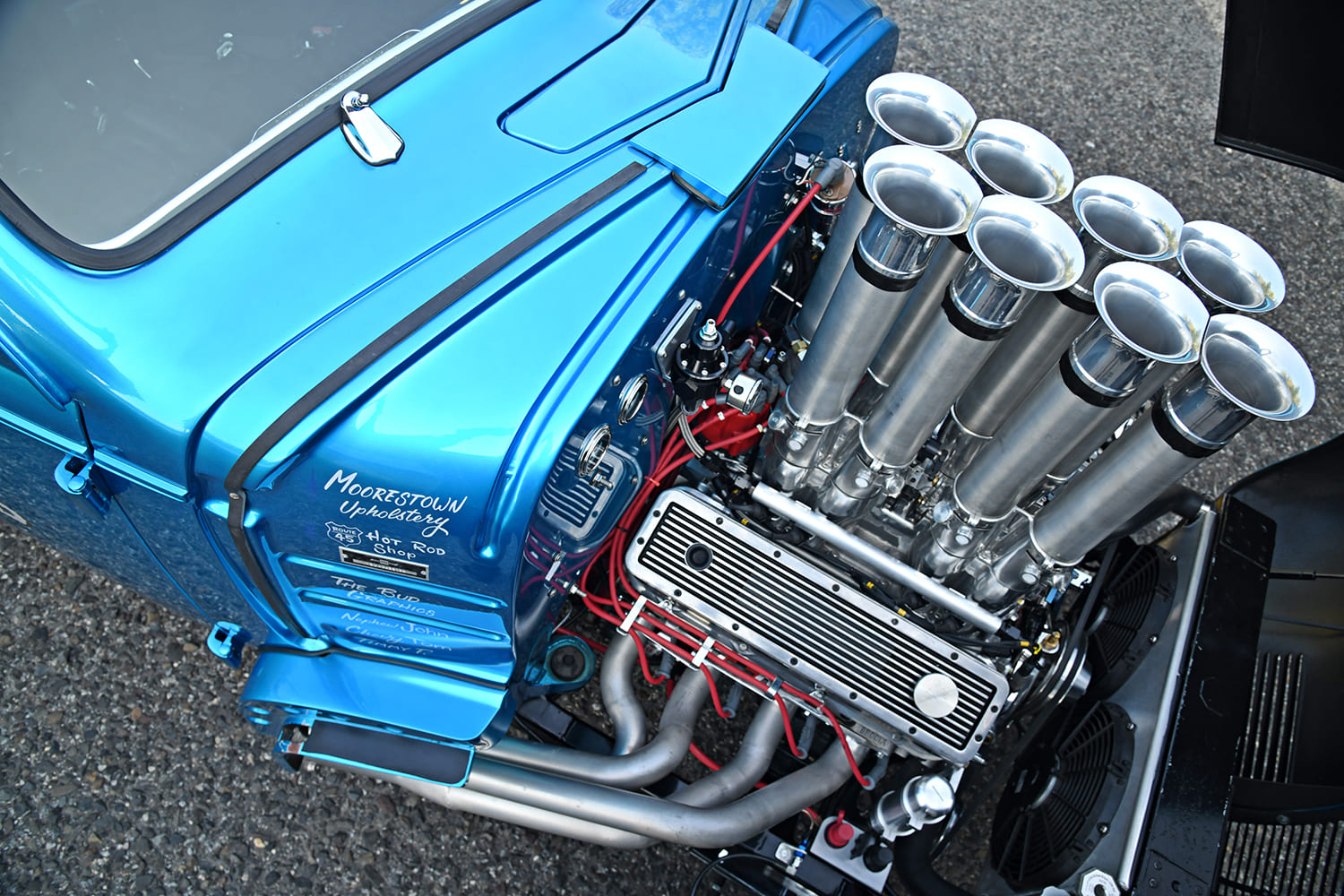
Though his goal was to do a recreation of a 1960s-style gasser, Joe used a mix of vintage and modern parts to pull off his build. A Flaming River power rack was added up front as were QA1 single-adjustable shocks. Wilwood disc brakes were installed at all four corners, pushed by a Speedway Motors electric power brake kit. Joe custom-milled brackets so the front axle would accept the modern Wilwood discs. Out back, Joe built a pair of extra-long chromoly ladder bars. A Ford 9-inch built by Drive Train Specialists is stuffed with 3.73 gears.
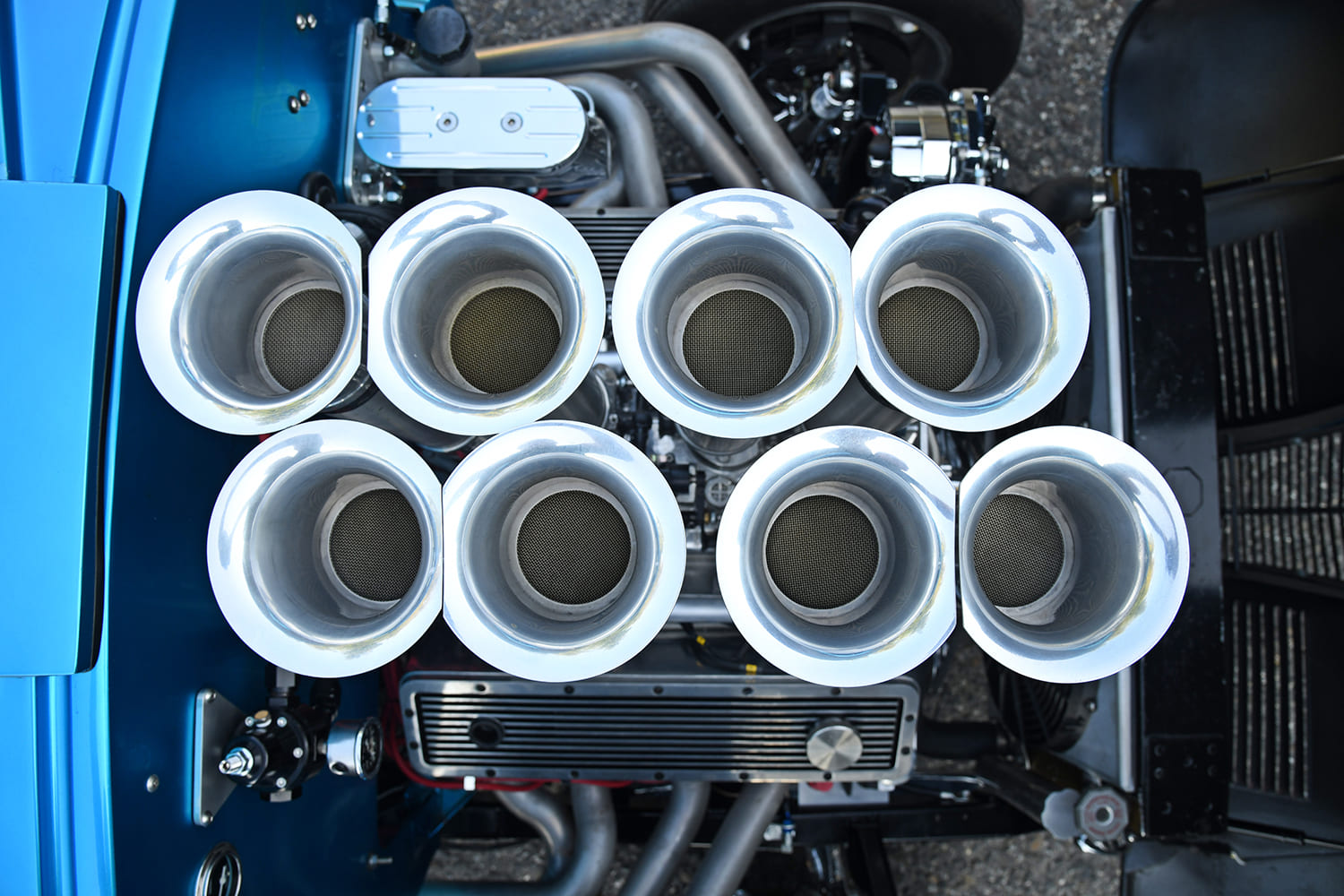
Joe moved onto the body, which needed extensive work. With the help of some friends, the group finished off all the metal replacement. A 4-inch chop was pulled off perfectly by Joe Sulpy of Phoenix. The final bodywork and paint was completed by Dave Hoffman Body and Paint in Pennsburg, Pennsylvania. “I went with a PPG color called Grandeur Blue, then the door graphics were added by Bud Cunningham at Budd Graphics of Delran, New Jersey,” Joe explains. “All the lettering was pulled off by another friend, Willy, at Willy’s Old School Lettering in Boyertown, Pennsylvania.”
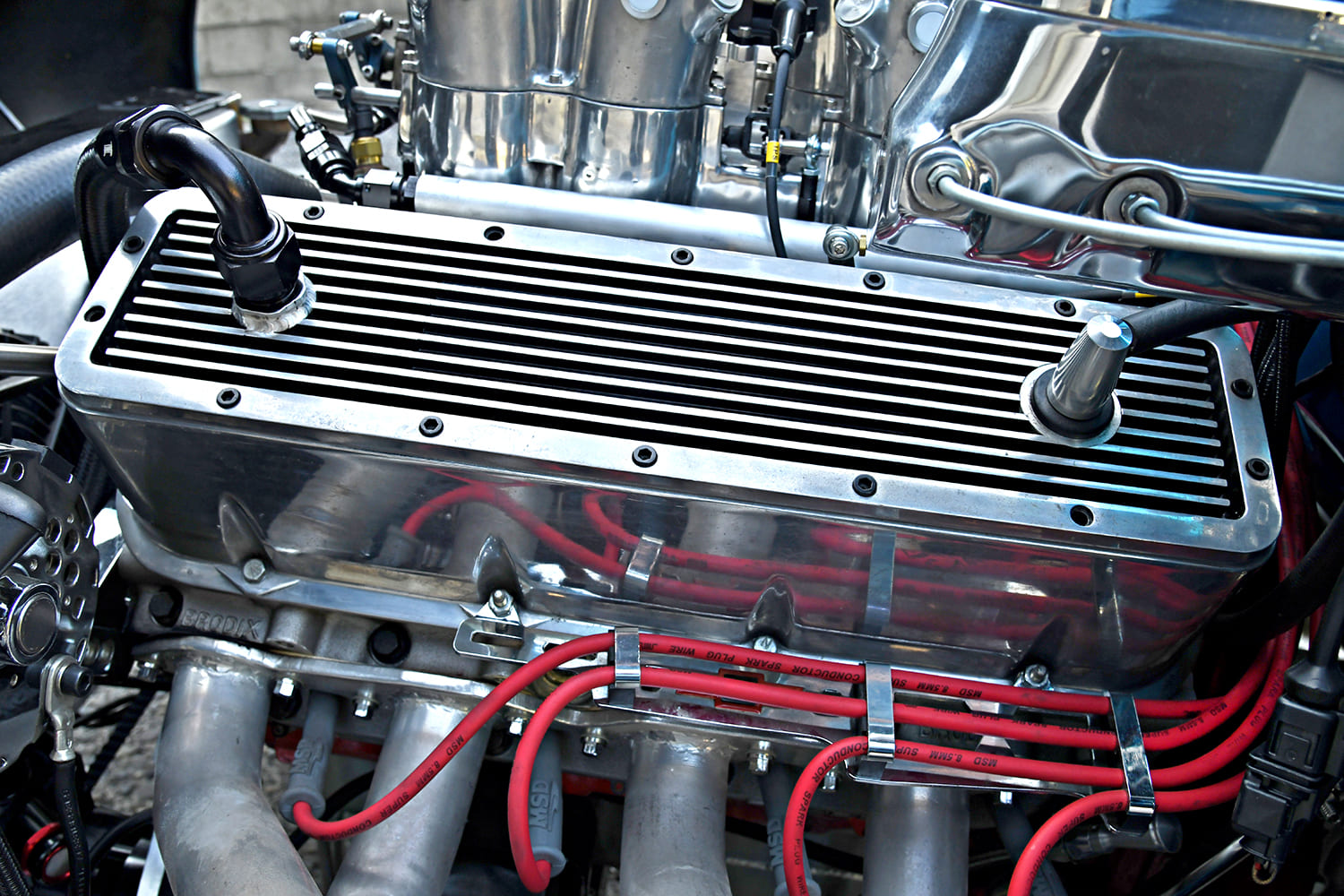
Joe explains the artwork on the car. “The graphics on the door are an homage to the 1960s. Jean is my mother’s name, and although she never got a chance to ride in the Chevy, she now rides with me every day. ‘Stone Bad’ goes back to my buddy Tony, who sadly died in Vietnam, but wrote in my high school yearbook ‘to a cool cat with a stone bad machine;’1965 was the year I graduated; and Wilkes Barre is where I started building the car in my brother’s garage.”
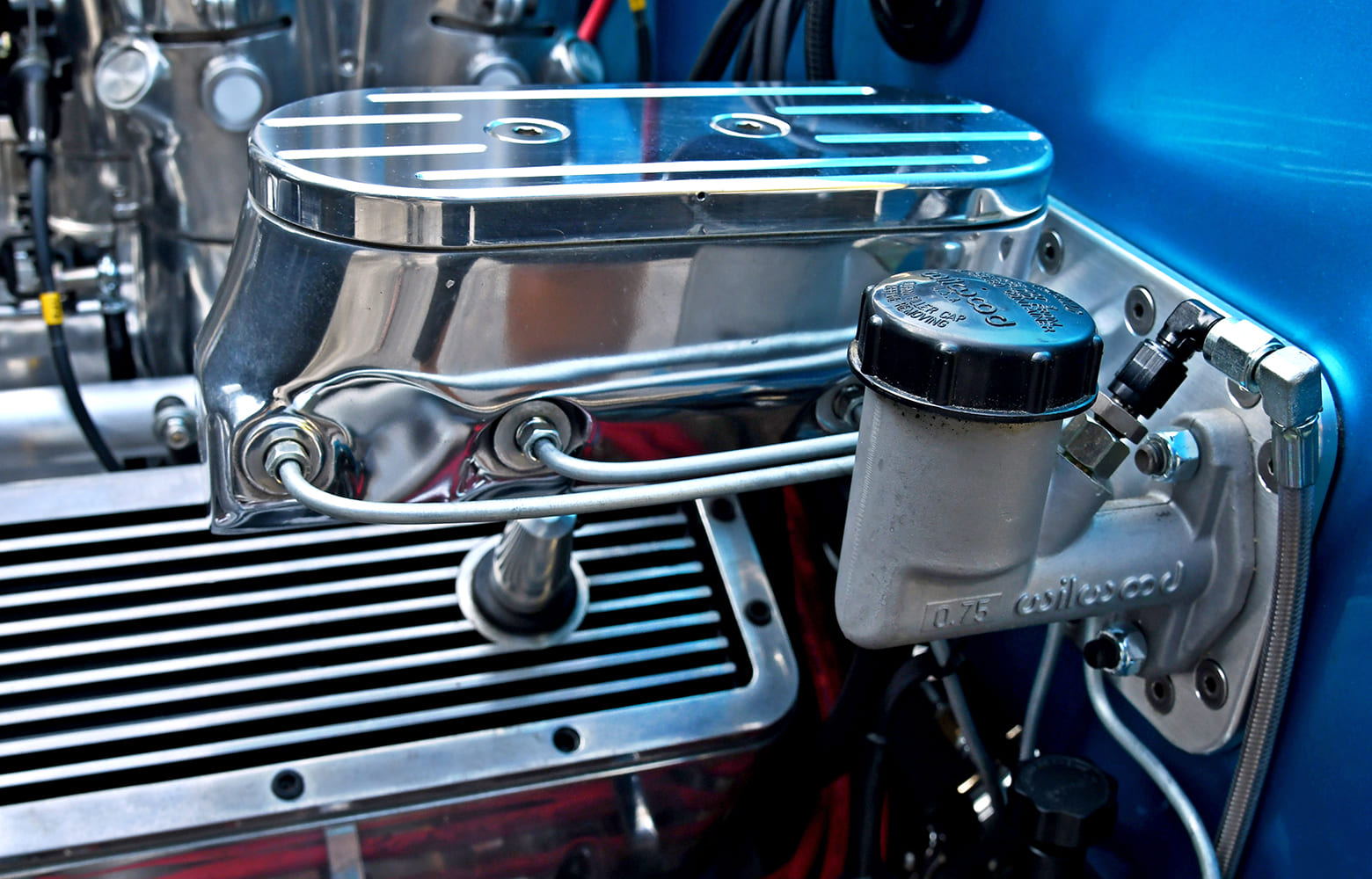
The cockpit is all business. Moorestown Upholstery handled the stitching, starting off the interior by redoing a pair of 1966 Corvette bucket seats in classic tuck and roll styling. The instrument panels were custom-made and filled with original Moon gauges and a tachometer. A G-Force five-point belt system was added for extra safety and a handmade rollbar was chromed and added for period perfection. A rearview camera was added out back and hidden out of sight when not needed in the Chevy’s glovebox. A Flaming River steering column is topped with a chromed Summit vintage-designed steering wheel. A set of Tilton pedals finishes off the look Joe was after.
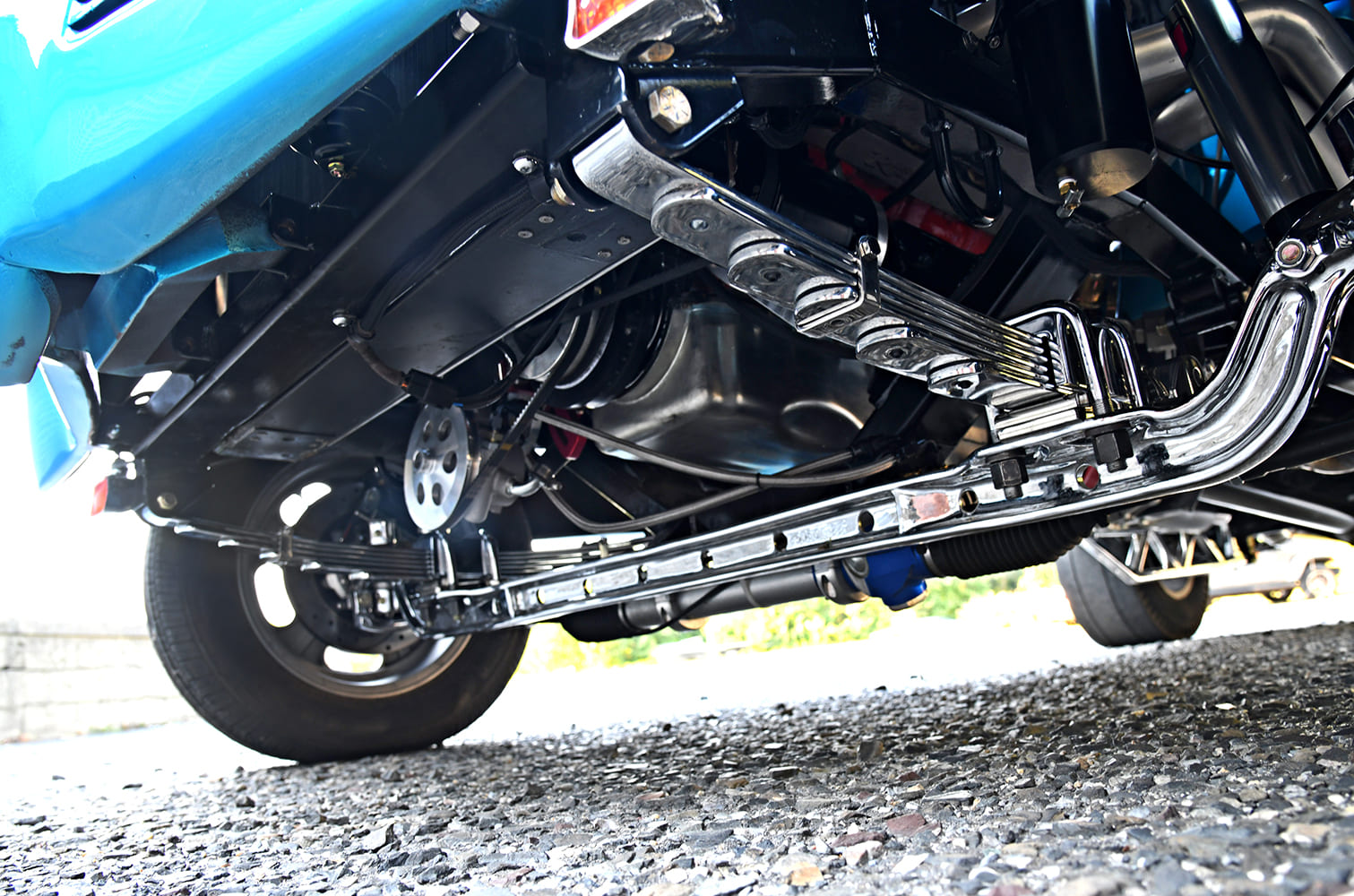
For power, Joe knew he had to hit the proverbial home run. All this big-block Chevy goodness starts out with a 454ci block punched out to 468 ci. An Eagle crank and rods form the rotating assembly along with SRP 11.0:1 pistons, making for some hefty compression. A pair of Brodix heads top the cylinders on this beast. For induction, Joe skipped the typical blower setup and used a Crower intake altered for EFI with handmade fuel rails run by a Motec ECU. He then set up velocity stacks and welded stub ends at 7 degrees at the bottom, rotated to vertical to make it look like an old-school Hilborn setup. Handmade headers running into a Borla 3-inch exhaust handles the spent gases.
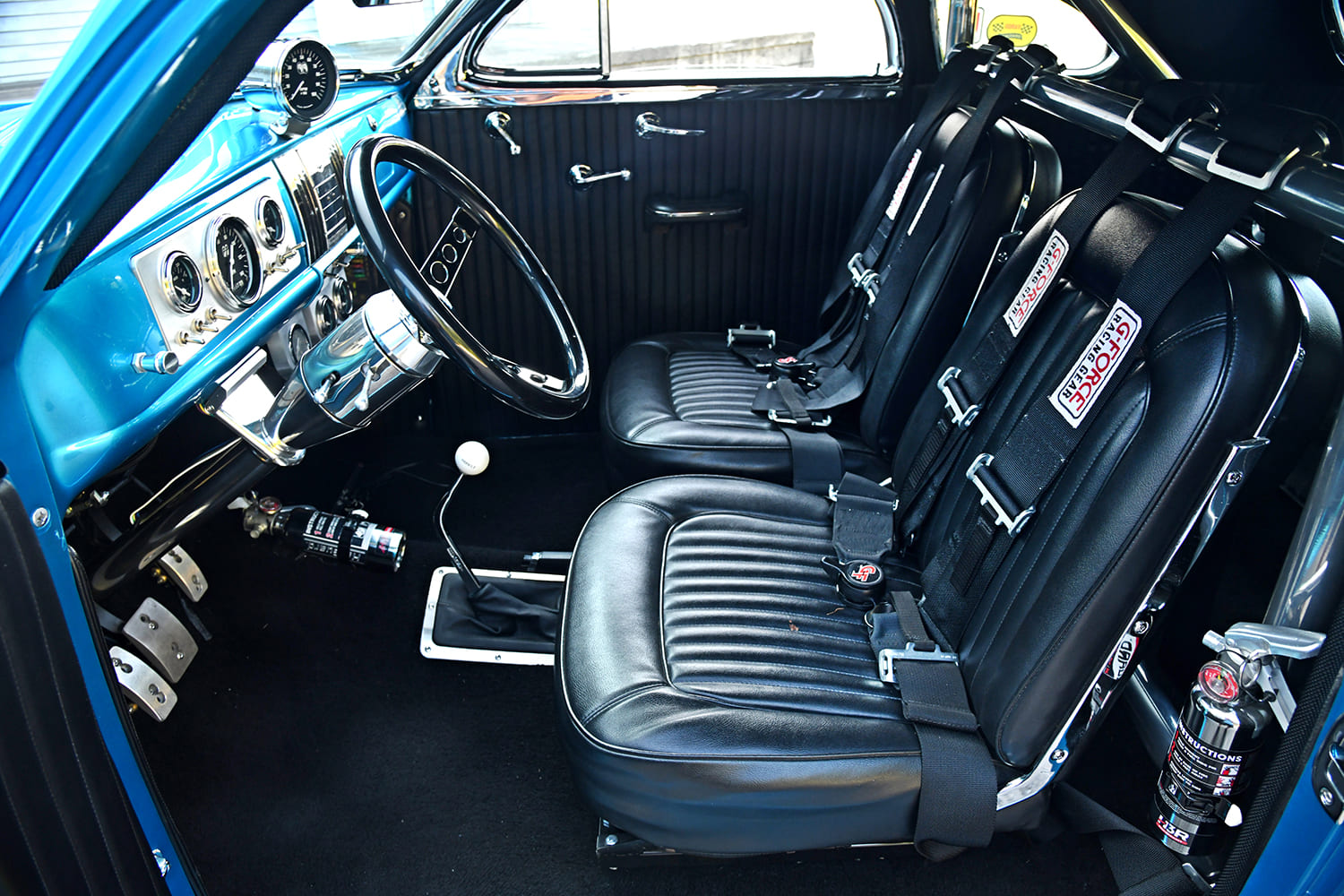
An M22 transmission was called into duty to get this ride through the gears. “I know, my Rock Crusher four-speed is not going to hold up for long with the 650 hp, and my heavy right foot,” Joe quips. “When it pops, I’ll just drop in another one. There is no compromise here, I got to shift this baby!” Stan Mahalek at Stan’s Trans in Wilkes-Barre, Pennsylvania, handled the tranny work. Scott Hughes at the Route 45 Hot Rod Shop in Swedesboro, New Jersey, installed a complete wiring harness using American Autowire products. A Bosch external fuel pump feeds this monster and pulls from a handmade, baffled 30-gallon tank.
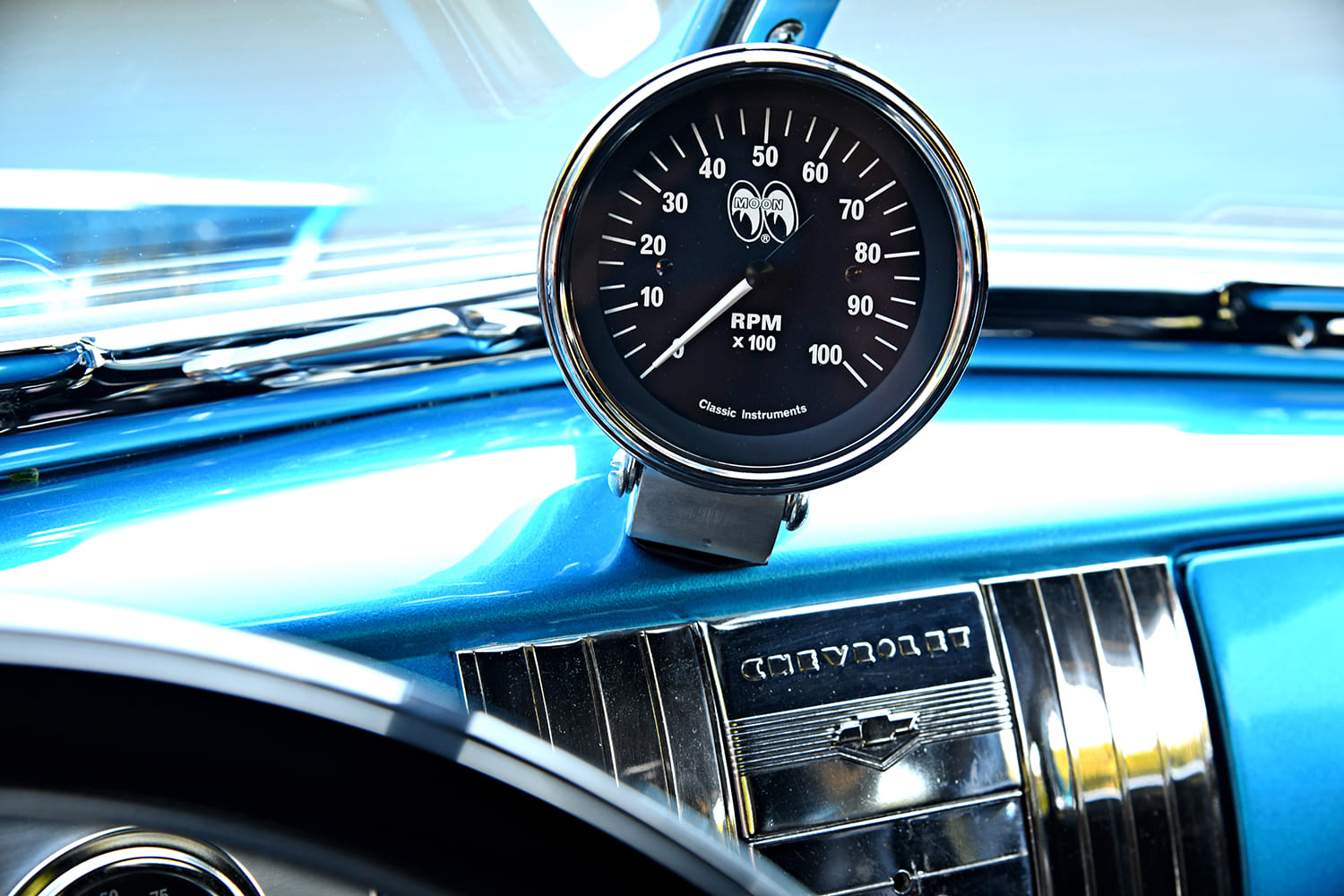
Once completed, Joe was blown away by what he built and described the ride as, “running on rails, and on a hard launch it sounds like a pissed off chain saw!”
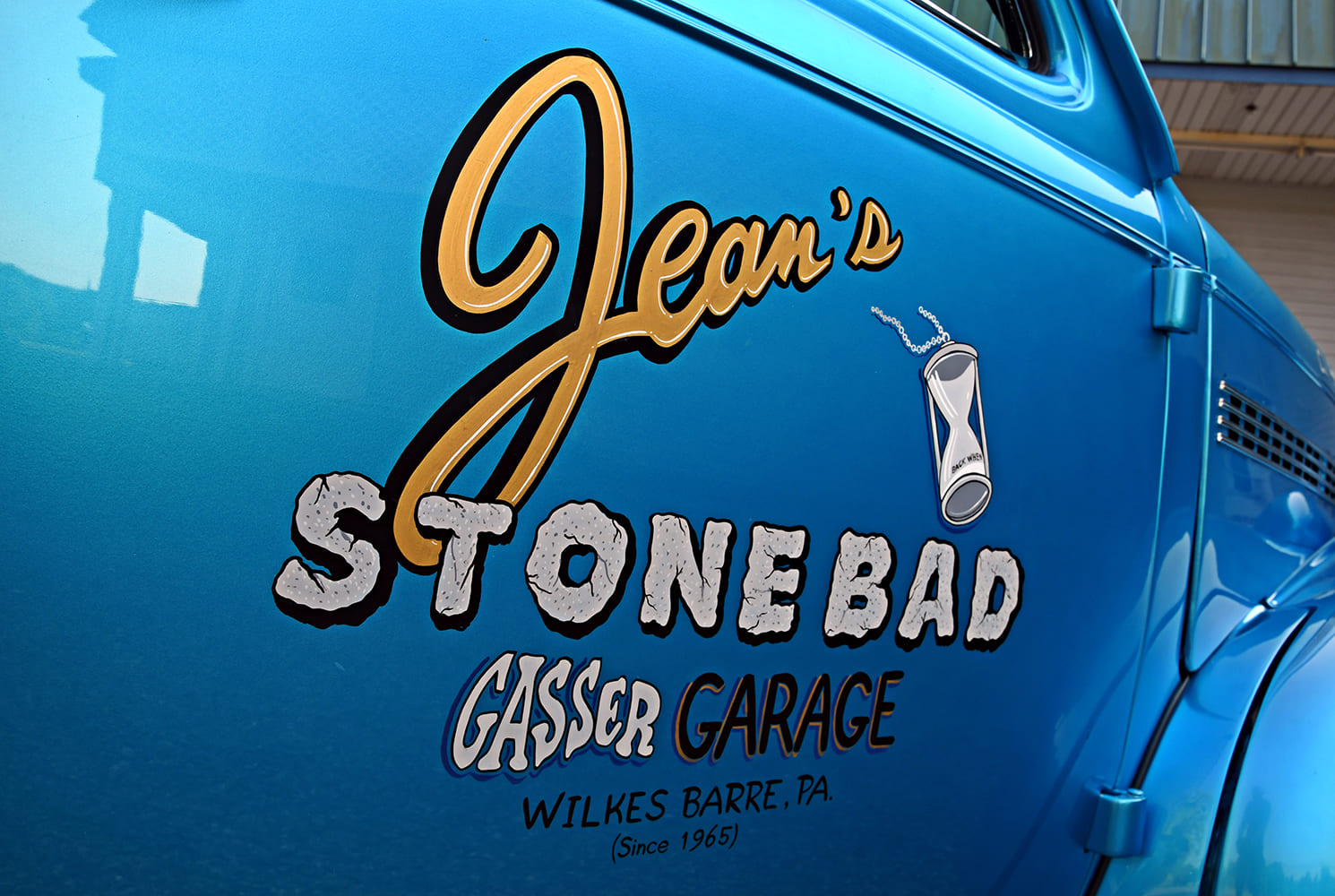
Special thanks go to Lou at Ben Pilla Speed Shop in Bellmawr, New Jersey, nephew John Mahalek, Dave Porter, Mike Talpos, Tony Salloum at VAC Motorsports, Timmy Pack, Rich Marshall, Tom Kettell, John Horay (Sparky the Welder), Joe Mazzo Trick Welding, and Tom Maier.
Check out this story in our digital edition here.
Tech Check
Owner: Joe Mahalek, Medford, New Jersey
Vehicle: 1939 Chevy Master DeLuxe
Engine
Type: Big-block Chevy
Displacement: 468 ci
Bore: 4.310
Stroke: 4.000
Cylinder Heads: Brodix aluminum
Rotating Assembly: Eagle Crank and rods, SRP 11.0:1 pistons
Camshaft: Comp Cams roller cam
Induction: Crower intake modified for EFI with Motec ECU
Exhaust: Handmade headers with a 3-inch Borla exhaust
Assembly: D&F Performance (Berlin, NJ)
Valve Covers: Vintage Edelbrock
Dyno Tuning: Second Street Speed (Perkasie, PA)
Output: 650 hp
Drivetrain
Transmission: M22
Rear Axle: Ford 9-inch rearend, 3.73 gears
Chassis
Front Suspension: Chevy van drop axle, leaf springs, QA1 single-adjustable shocks, Flaming River rack-and-pinion
Rear Suspension: 1939 Chevy leaf springs, QA1 single-adjustable shocks, homemade chrome ladder bars
Brakes: Wilwood discs with Speedway Motors electric brake booster
Wheels & Tires
Wheels: Original Ansen Sprint, 15×4 front, 15×10 rear
Tires: Nankang 165/80R15 front, custom radial pie crust tires rear
Interior
Upholstery: Vinyl
Installation: Moorestown Upholstery (Moorestown, NJ)
Seats: 1966 Corvette
Steering: Flaming River column, Summit steering wheel
Shifter: Hurst
Dash: Custom
Instrumentation: Moon
HVAC: None
Entertainment: Loud exhaust
Rollbar: Custom chrome
Exterior
Bodywork and Paint: Dave Hoffman Body and Paint (Pennsburg, PA)
Paint: PPG Grandeur Blue
Front Bumper: None
Rear Bumper: Custom tube
Graphics
Budd Graphics (Delran, NJ)
Lettering
Willy’s Old School Lettering (Boyertown, PA)











